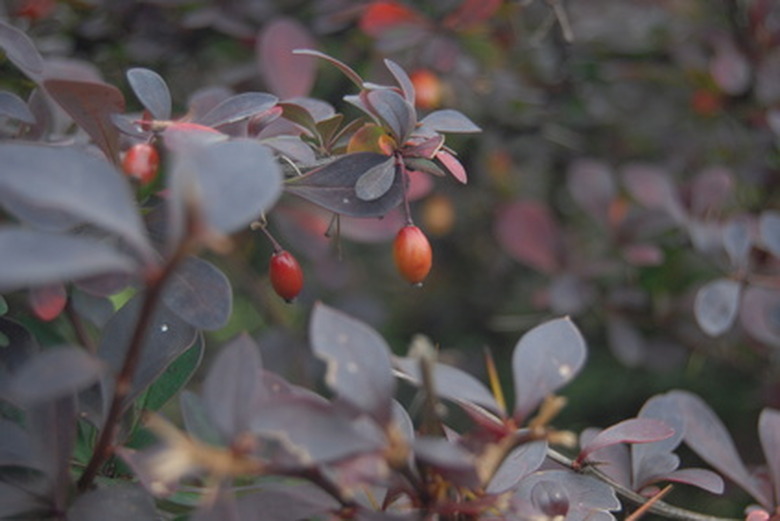How To Propagate Berberis
Things Needed
- Container with drainage holes
- Potting mix or other commercial growing media
- Sharp pruning shears
- Berberis stem cutting
- Horticultural rotting hormone powder
- Bottomless, plastic milk jug
The genus Berberis contains a variety of low maintenance, 2- to 6-foot shrubs, known for their summer and fall landscape interest, such as lime or burgundy foliage. Some types yield ornamental berries in winter and tough thorns discourage deer foraging. Propagating Berberis shrubs by cuttings is an inexpensive way to increase landscaping plants.
Step 1
Fill a container with drainage holes with a light-textured growing media, such as a good quality potting mix or a soilless media intended for propagation purposes.
Step 2
Cut a 4- to 8-inch portion of a Berberis stem tip with sharp pruning shears in summer or fall. Remove the bottom 1-1/2 to 2 inches of leaves to avoid contact with the rooting medium, which helps prevent rotting.
Step 3
Remove a small portion of growth hormone from the package. Scrape two 1-inch-long cuts around the bottom portion of the Berberis cutting, and dip the cut stem end into the hormone powder.
- The genus Berberis contains a variety of low maintenance, 2- to 6-foot shrubs, known for their summer and fall landscape interest, such as lime or burgundy foliage.
- Cut a 4- to 8-inch portion of a Berberis stem tip with sharp pruning shears in summer or fall.
Step 4
Make a small hole in the potting mix, stick in the Berberis cutting and lightly firm the soil around it. Water the growing media to settle it around the cutting.
Step 5
Place a bottomless milk jug or other similar container over the cutting to reduce moisture lost by evaporation.
Step 6
Move the prepared cutting to a protected location out of direct sunlight. Check the potting mix daily, and add water as needed to keep it moist. Remove any dead leaves that fall from the cutting.
Step 7
Remove the cutting to a 4 inch diameter pot after sufficient, 2- to 3-1/2-inch long, roots form, which may take two to three months, according to Washington State University extension. The cutting is beginning to root when a slight tug yields resistance.
- Make a small hole in the potting mix, stick in the Berberis cutting and lightly firm the soil around it.
Step 8
Acclimate the rooted cutting to outside growing conditions by gradually reducing the amount of time the cutting is covered by the milk jug, and provide the newly potted cutting a partial shade location for several weeks before placing in direct or bright sunlight.
Tip
Propagate more than one cutting at a time in case some fail to root.
